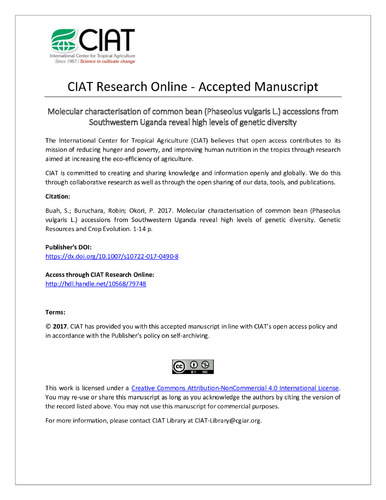Molecular characterisation of common bean (Phaseolus vulgaris L.) accessions from Southwestern Uganda reveal high levels of genetic diversity
Common bean (Phaseolus vulgaris L.) was introduced to East Africa over 400 years ago and is today a fundamental part of food and income security of many smallholder farmers in the region. East Africa is among the top three bean producing and consuming regions of Africa with Uganda, Rwanda and Kenya being leaders in production. The leading common bean producing region in Uganda is the Southwestern (SW) highlands. Production is subsistent and farmers grow mixed varieties (accessions) to minimize losses. The aim of this study was to investigate the impact of farmer selection and production practices on genetic diversity of common bean in SW Uganda. 100 accessions were assembled from SW Uganda and assayed with 6 DNA simple sequence repeat (SSR) markers. A total of 41 alleles were detected giving an overall average gene diversity of 0.299 (30%) in both districts. The accessions clustered into two major gene pools i.e., Mesoamerican and Andean. Within each gene pool there was evidence of clonal populations suggesting wide distribution of certain accessions. Kabale district had a higher average gene diversity (38%) compared to Kisoro district (22%). Detection of Andean phaseolin in a clone set of Mesoamerican gene pool suggests introgession between the two groups.

